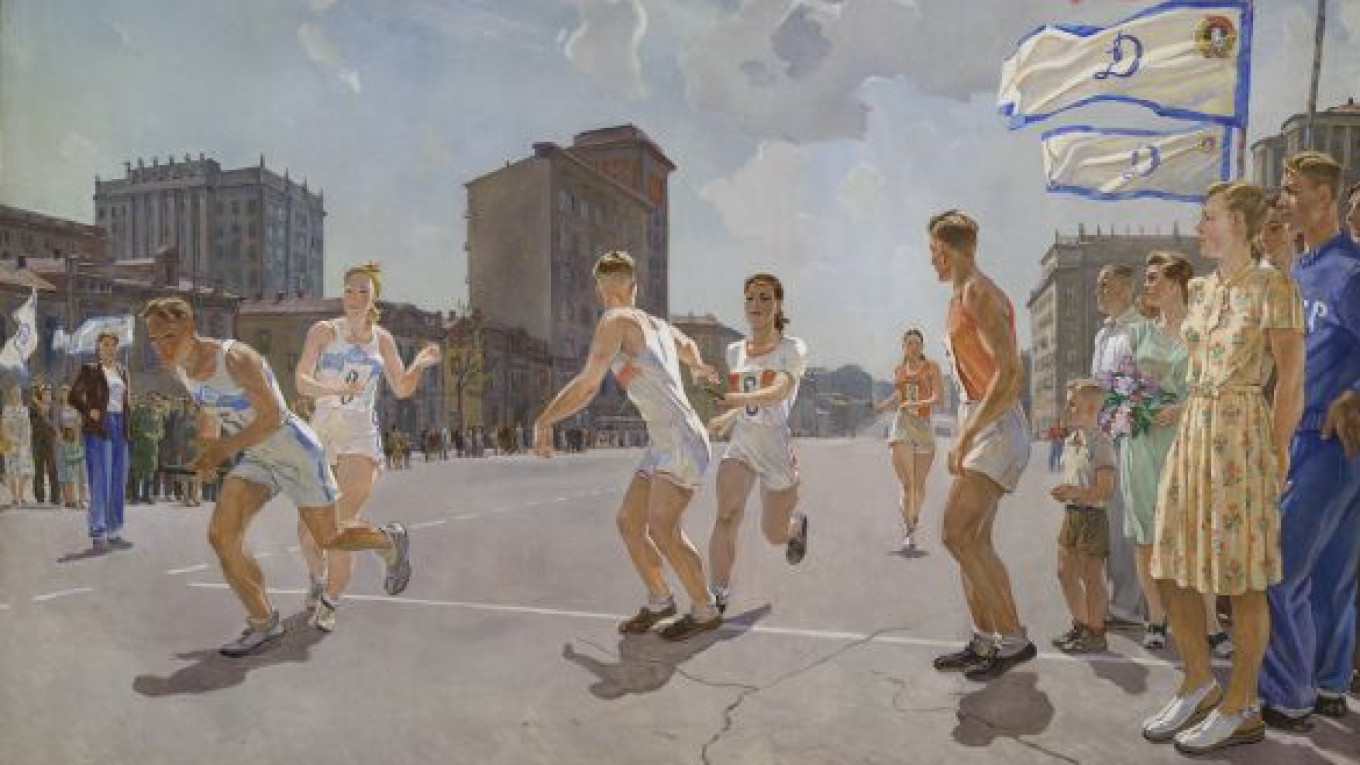If you look up in the Mayakovskaya metro station, you can see the work of Alexander Deineka in the mosaics on the ceiling. The New Tretyakov Gallery saves everyone a stiff neck with an exhibit that places the mosaics and dozens of his other works on its walls, so that visitors can get an easier look at the work of one of Russia’s most famous modernist painters of the 20th century.
His work is characterized by larger-than-life paintings that look at work and play — and aviation — in the Soviet Union. Or as the gallery wrote, representations of Soviet youth “heroically working and wonderfully relaxing.”
The heroes include miners, textile trade workers and footballers — as Deineka was one of the more successful of the artists who, as the avant-garde fell out of favor, became entrusted with creating the collective worker for the Soviet regime.
The exhibit commemorates the 110th anniversary of his birth. A number of his paintings have been specially restored for the exhibit, and there are also displays of his sculptures in bronze and wood.
The exhibit is titled “Rabotat, Stroit i Ne Nyt,” or “Work, Build and Don’t Complain,” after one of his most famous works, which shows a female worker and displays the inspirational phrase.
“There is a generation for whom the name Deineka maybe means a lot less than for those of us from a previous generation,” Yelena Voronovich, the exhibit’s curator, told the Vechernyaya Moskva daily. “We wanted to show the emotional state of the artist … his dislike of complaining and his feeling that if you live and don’t fight then nothing will happen. We met phrases like that a lot in his personal writings.”
Kommersant criticized the exhibit for going against the accepted idea that Deineka was the only ray of light in the official art world of the Soviet Union, the one who retained the lessons of the avant-garde, and that instead the exhibit gives the impression that Deineka was some kind of “Soviet Forrest Gump, the singer of sport and health,” the newspaper said.
“The museum has tried to look at Deineka from the idea of pure art,” Kommersant said. But by trying to tear Deineka away from the epoch and the ideology of the time, Tretyakov has diminished the artist.
To coincide with the exhibit, the second of a three-volume series of coffee table books on Deineka’s work has gone on sale.
“Alexander Deineka (1899-1969): Paintings. Graphics. Sculptures.” runs till May 23 at the New Tretyakov Gallery. 10 Krymsky Val. Metro Oktyabrskaya, Park Kultury. www.tretyakovgallery.ru.


